For two years from March 2020, the world was forced to a standstill due to imposition of Covid travel restrictions. In mid 2022, travel restrictions were relaxed globally proportionate to the very much reduced Covid threat which albeit remain infectious had lost much of it's potency. Soon, planes started flying and people began travelling again. Despite the rising air ticket prices brought about by the disruption of gas supplies from the Ukraine Russian conflict, it did not dampen the pent up urge to travel after two long years of movement restriction worldwide.
Since the founding of Islam in the 6th Century, the Kingdom of Saudi Arabia ( KSA ) was not accessible to the world with the exception of Muslim pilgrims and those with official business permit. Before the outbreak of Covid, KSA had made a landmark announcement of opening it's country to tourism from September 2019. It's ambition was however abruptly halted with the global lockdown. When travel restrictions were recently lifted, I knew at an instance that was where I should go. The reason is a curiosity in other faiths, and Saudi Arabia is the cradle of Islamic civilisation. During the pre-Islamic period, it was a region that had the footprint of early Jewish settlers at the land of the Midian. The Midian is a mountain range in Tabuk called by the Saudis as Jabal Al Lawz. Because it was off limits to the world, those religious historical places have been frozen in time for thousands of years. It's a chance of a lifetime to see it in it's original state which very soon will be blotted by massive development and tourism.
As in all my travels, it's a DIY trip with like minded buddies. The excitement began during the planning stage but the adventure starts at the airport. And that's where we found ourselves on 26.12.22 at KLIA.
At the Saudi Airlines counter in the early morning hours.
We had 3 hours to "kill" and headed for the Golden Lounge after checking in. In the wee hours of the morning we're already having breakfast with double helping.😀
Relaxing after a heavy meal.
Nice and comfortable lounge to rest our stomach. 😊
That's our flight, Boeing 787-9 Dreamliner.
It's a long haul flight and we chose to fly in comfort.
Ten hours later, our flight landed at King Abdul Aziz Airport, Jeddah on time.
The process of checking out was smooth and we collected our pre-booked cars from Budget Car rental at the airport itself. We were offered two MG SUV cars when our reserved brands were not available. It's a better replacement and See Leong and I drove a car each.

Our first stop was to check into our Hotel, Spectrums Residences at Al Salamah District.
The reception recommended Khayal Restaurant which is across the busy road and we headed there after checking in. We noticed two entrances, one for families and the other for singles. KSA have done away with this strict ruling but most establishment leave the structure as it was without enforcing the ruling anymore. Our first taste of middle eastern food in Jeddah. We ordered BBQ mix grill, Shawarma Chicken and some spice potatoes cube. The bread and humus comes together with the food. The seating area is simple and six of us cramp into a table of four so we could eat together.
After lunch, we got into our car and drove straight for our first agenda on our sightseeing itinerary.
That's where we are headed, the Jeddah Corniche.
The sun was setting when we arrive. The reddish orange skyline over the Red Sea is phenomenal and we enjoy strolling along the corniche.
The Jeddah signage strategically placed here makes it a very "instagramable" spot. Unfortunately, the glare from the light darkens the subject in our pictures.
Without any subject, it's as beautiful as it gets.
It's a hugely popular place among the locals and we certainly enjoy strolling here with the cool cool weather.
For a desert, the weather is fantastic, low in humidity; much better than back home.
We were told to check out the 'local KFC' when in Saudi, and Al Baik seems to be a popular here.
That's where we went to for our dinner. Like all other fast food joint, it is self service, but the dining area which is upstairs had different table shapes and sizes. We got ourselves a round table. The taste is actually very good, crispy skin, moist meat and tender. We gave it a thumbs up.👍
Day 2 - Corniche again and exploring Al Balad.
Spectrum Residence is nice, clean and comfortable and we had a good sleep the night before. The breakfast spread was not overflowing but adequate. There were only a few other guests and we thoroughly enjoyed eating in peaceful environment.
After breakfast, we drove towards the Red Sea coastline again hoping to visit the Al Rahma floating mosque and King Fahd's Fountain. However, the floating mosque was closed for some upgrading while the King Fahd's fountain was not operational on that day.
So we decided to walk at another section of the Corniche. Jeddah's entire coastline is landscaped from North to South and one can stopped at any part to enjoy the sea view. The locals flock to the corniche in the morning to exercise, and evening to relax and enjoy the sunset view by the sea.
It's afternoon and not many people are around but it is not that hot during this time of the year.
We have the whole place to ourselves and took the opportunity to have our photographs taken at every conceivable angle.
Neat stalls selling drinks and snacks are at every section.
Common sight in Saudi, pray anywhere when there's a call to prayer.

Back to our car for our next place to visit.
Al Balad - Old Jeddah.
Jeddah the second largest city in KSA is the gateway to Islam's holiest city of Mecca which is located to the East and second holiest city of Madinah to the North. Since the 7th Century, Al Balad the was a hive of activity serving fisherman and pilgrims disembarking from the port of Jeddah. It was not until the oil boom in the 70s and 80s that Jeddah grew richer and started moving out of of Al Balad to new middle class homes. Migrants started occupying vacant properties there, but lately, the government have allocated a sizeable budget to refurbished the old city since it's recognition as a UNESCO Heritage site. The traditional architecture with it's rich history gives character to Al Balad as compared to the uninspiring brick building of modern Jeddah.
We could only find a 2 hour parking slot at the fringe of Al Balad.
During the early days, old Jeddah was a hive of activity with pilgrims passing though the town and shopping at the Souqs and exchanging money on their way to Mecca. Some of the shops today at Al Balad still sell the traditional frankincense, clothing and garments.
The unique feature of these old buildings is their design. The portruding windows are called "rawasheens". In the early days with no air conditioning, these windows serves to keep spaces cool and airy.
We took our time exploring the entire place, even walking the lanes and back alleys.
The Nassif House Museum. This was the house of the first Governor of Jeddah and King Abdul Aziz used to stay here on his visit to Jeddah. The tree was a rarity in the early days and was the only house with a tree until the 1920s.
Some of the houses have doors with intricate designs and the ladies are creative in taking pictures with the unique door.
The shops served pilgrims passing here on their way to Mecca.
Taking a breather at the compound of Nassif House and soaking in the environment.
At the market area, we came across this tea stall and decided go local for our afternoon tea. While chatting with the stall operator, we found that he is from Yemen and have been here for many years. Al Balad have a lot of migrants staying and operating shops here.
The market street.

Shops and stalls around the Bedouin market area.
Pilgrims in the early days used to enter the city from that gate after disembarking from the old Jeddah port.
They will stop by for a rest and do some shopping at Al Balad before continuing their journey to Mecca.
Al Balad is in the midst of being refurbished and many of these heritage buildings will be revived in an effort to preserve the traditional Arabic culture. We spent more than 3 hours exploring the place walking the footsteps of millions of pilgrims that came before us.
Day 3 - Our Hijjra to Madinah, Islam second holiest city.
Our objective in Jeddah was to explore the birthplace of Islam. While Mecca, the holiest place is still off limits to non Muslim but we had planned to visit the second holiest city, which is Madinah. The importance of this city in Islam should not be under rated. This was the city where Prophet Muhammad built his first mosque after he arrived. It has since morphed into the grand Masjid Al Nabawi today.
During the pre Islamic era, the Arabs and traders lived in a polytheistic society and pray to multiple gods. When Prophet Muhammad started preaching his monotheistic view of one God, it not only clashed with their century old belief system, but upended lucrative trade that came along with it. The dominant merchants were obviously not receptive to new ideas and began to persecute Muhammad. The Prophet and his followers had to flee Mecca to Yathrib where his arrival was awaited.
A sketch of the journey from Mecca to Yathrib by Prophet Muhammad which was a landmark event in the Muslim world. The year in 622 CE in Gregorian Calender was the start of the Muslim year and the two months journey came to be known as the Hijjra. Yathrib was later renamed Madinah, the City of the Prophet.
By contrast, today we can travel in airconditioned comfort. Here we are at the Haramain Station lobby.
The Haramain HSR train serves pilgrims travelling between Mecca and Madinah. Haramain in Arabic means "two sanctuaries" aptly referring to the two haram cities of Mecca and Madinah.
The Haramain Express was the first High Speed Rail in KSA built by China and operational in 2018 between Mecca and Jeddah whilst the Jeddah- Madinah stretch was opened in 2021, delayed by the Covid.
Exiting the Madinah station upon arrival.
We got a 7 seater car via Uber and was soon on our way to Mount Uhud, 10 km away.
Here we are at Mt Uhud, our first stop. This is a revered site of the Muslims who will come here if they are in Madinah for their pilgrimage.
This is the site of the second battle between Muhammad led Muslims against the Quraysh Meccans after winning the first battle at Badr a year earlier. However at Uhud, Muhammad suffered a defeat this time and was injured and had to retreat from the battle.
There would be a few more battles after Uhud. Eventually in 629 CE, Muhammad marched triumphantly into Mecca and without resistance took control of the Kaaba and the city. From this point onwards, Islam began to take root and even after Muhammad's death in 632 CE, the Caliphate took over and Islam began to spread to North Africa and Spain through military conquest. Mecca continued to be an important commerce and Muslim religious center and through trade, pilgrimage and missionaries, Islam soon spread from Middle East to Sub Sahara and to the Far East.

It's history for some and instagram for others.😎
Mount Uhud is a curiosity for us as tourist, but a significant place for the Muslims.
Soon we boarded an empty bus to take us to the Haram area of Masjid Al Nabawi.
The many hotels surrounding the Masjid is an integral part of the massive mosque complex.
These hotels serves Muslims coming for their Haj or Umrah pilgrimage.
Our first sight of the mosque upon entering the haram area..
The huge umbrella was opened to provide shed from the Sun.
The ladies are dressed as conservatively in respect of the religion.
A link bridge between two complexes near the mosque.
Pilgrims from all over the world thronged the mosque for Azar prayers while we were there.
The furthest we can go to is at the perimeter fencing of the mosque. There are 42 gates at this fencing that goes around the mosque.
Yvonne at one of the many pedestrian mall.
They prefer to stay a further distance from the mosque after being stopped for going too near.
The massive Al Nabawi mosque can accommodate 250,000 worshippers on ground and roof level.
The modest mosque built by Muhammad when he first arrived at Madinah in 622 CE have morphed into what it is today, a massive 100,000 sq meters structure. Millions of Muslims came from all over the world for their annual Haj or ad hoc Umrah pilgrimage in keeping with their faith. The sanctity of this place have been kept solely for the Muslims but changes is slowly taking place now in keeping pace with progress. It has become the second largest religion in the world after Christianity.
Day 4 - Uncovering the hidden treasures of Al Ula.
Al Ula is long journey by road from Jeddah, so we decided to fly to Tabuk and use that as a base to visit Al Ula and other places in our itinerary in NW of Saudi Arabia.
We booked Flynas, one of the few domestic carrier.
Checking in was smooth.
We had time to spare while waiting for our flight.
It's an hour flight and our pre-arranged driver was waiting for us at the airport.
I had pre-rented an MPV 4WD Car with driver that can accommodate all 6 of us including our big luggage. The driver, Ahmed came with a GMC Yukon, which is a popular 4WD car in KSA. It is a rebadged model of Chevrolet Suburban and big enough to meet our request.
Our first impression of Tabuk city is that it is well planned and modern.
The journey by road to Al Ula takes about 4 hours but the scenery along the way is out of this world. It's a desert with clusters of strange and fascinating rock formation and you would be forgiven to think that it's a different planet.
Historical sites of Hegra.
The driver rushed for us as we had to make it for our scheduled time for our guided tour of Hegra. All historical sites in Hegra can only be access by government appointed guided tours as the historical digs are still ongoing and what is unearthed now is only a tip of the iceberg. Much of the area is sealed off to prevent any unauthorised archeological activity.
Around the 4th Century BCE, the Civilisation of Nabeteans settled in today's Southern Jordan and North West Arabia, specifically from Petra to Hegra. They were dominant in this region and controlled the trade routes between East and West, in particular the caravan traders. This created wealth resulting in a lifestyle of opulence and luxury to the nobilities.
This outcrop at the edge of Hegra known as Jabal Al Ahmar is home to 18 tombs.
From the inscriptions of one of the tomb, it reads as " This is the Tomb that Hinat, daughter of Wahbu made for herself and her children and descendants forever. And no one has the right to sell it, or give it in pledge or write for this tomb to a lease. And whoever does other than this, his share will revert to his legitimate heir. In the twenty first year of King Maliku, King of the Nabateans."
The inscriptions were carved in 60 CE and it indicates concern of human greed is as old as 2,000 years ago. Analysis of the bones established it was the final resting place for as many as 80 individuals.
Trained guides from the site giving us briefing on historical findings to date.
Fascinating rock formation resembling three faces seen around the vicinity
Qasir Al Farid, the most iconic Tomb in Hegra ( Madain Saleh ).
The tomb was carved top down without scaffolding and the bottom is unfinished. It was the Tomb of Lihyan, son of Kuza as stated in the inscriptions, but his remains was not found.
Jabal Ithlib is a place of glorious natural mountains and cultural site of the Nabateans.
The attraction is the "Diwan" which was carved out of the rock as a place for political meetings, royal banquet or simply a gathering place for the traders and locals. The open front is probably designed for public to observe the going ons of any event.
The Diwan has a passage that leads into the mountains behind. There are many inscriptions of various languages from different time periods found on the rocks here. All these inscriptions can be identified and these are the sole source of information for the archeologists and the messages allows us to have a peek into the past, it's lifestyle and the history behind it.
Our stay in Al Ula is a farmhouse nearby and we had planned to cook our own meal that evening. Before checking in, we dropped by a grocer store and did the necessary purchases for dinner and breakfast. Everything we needed is available, local produce and international brand as well.
It was pitch dark when we arrived at our farmhouse at Al Atheeb.
In no time, we settled in and the chefs started to whip out dinner for everyone. The simple Indo Mee and prawn sambal we brought along is enough to satisfy our appetite for food.
Day 5 - An entire day exploring Al Ula.
We had booked two tours in advance before arrival to Al Ula. After yesterday's Nabatean's heritage tour at Hegra, today's tour is the heritage of Dedan civilisation which at Al Ula itself. Both the kingdom existed adjacent to one another around the same period of 5th Century BCE.
Our tour bus was waiting at the site to ferry us to our heritage tour of the Dedan civilsation.
The desert is cold in the morning and evening, especially during the current winter months.
Upon entering the site, we were greeted by the sight of a humongous rock mountain.
This is the archeological site of Dedan civilisation and the massive outcrop at the background is Jabal Dedan.
The mountain is filled with tombs of the Dedanites and Mineans ( Yemenis ). Two of the Minean tombs were outstanding among the hundreds of tombs in this mountain. They were much bigger in size and adorned in stylised Lions as big as the opening of the tombs reflecting the wealth of those resting here. The mountain is sometimes referred to as The Lion Tombs of Dedan because of these two tombs.

We were next taken to the site where the entire Dedan City was buried in sand. As of to date, only 5% is being unearthed. Much more have yet to be uncovered and the whole area is out of bound to everyone, including tourists.
The ladies prefer doing wefies against the stunning backdrop.
It is hard to believe that this barren landscape was once a thriving civilisation 2,000 years ago and was the emporium of trade between East and West. We will get to learn more about them when more of this ancient city is unearthed.
Jabal Ikmah - An open Library.
Another mountain nearby called Jabal Ikmah is not only stunning. What makes it exceptional are the thousands of inscriptions found on the many rock surfaces. This gives us a clue into the life of the civilisation here two thousand years ago.
Nestled in the valley of red canyons, this place is dotted with numerous archeological wonders.
Inside this valley, there are high concentration of engravings that makes it earn the title of "Open Library", but the reason why so many ancient people decided to leave their marks here is unknown. What is known is that the nearby Dedan city used to be a major regional hub in the 6th Century BCE, attracting traders and scholars from far and wide. Reliable estimates dates the oldest inscriptions at Jabal Ikhmah to 644B CE.

Languages represented in these inscriptions include Aramaic, Dadanitic, Safaitic, Thamudic, Minaic, and Nabataean, all languages that predated and eventually influenced Arabic. All these scripts and languages have been deciphered, which increases the historical significance of this place. This mountain truly bears witness to the tumultuous history that unfolded in this region through the millennia. The topics represented in the inscriptions range from names of people with little or no additional information, to detailed descriptions of religious rituals, commercial transactions, and transcriptions of local laws. Several geographical names are also mentioned, including Badr, Tha’al, and Mahja, which testifies to the crucial role that the city of Dadan played along this trading route.
Harrat view point.
After the heritage tour ended at 11.00am, our driver offered to show us around and one of the place he took us was to the Harrat view point nearby
The 15 mins drive up the mountain was indeed a worthwhile trip as it gives a view of the Al Ula from the mountain. However, the section with the view of old town was closed off when we were there.
Our next itinerary is the Elephant Rock, but we decided to go there only in the evening for the sunset view. So after our late lunch, we took a break and went back to our farm house as we have yet to enjoy it, the compound and adjacent orchard.
The owner had oranges and date palms in the vicinity and we are free to pluck as we want. There's a huge monolithic rock beside the house which have a unique formation like many others seen all over Alula.
The scenery towards the Elephant Rock area is unreal. You would be forgiven to think that you are in the red planet of Mars.
We had seen pictures of this rock before coming here, but to see it up close is unbelievable. Rock formations are the highlights of Al Ula and it's no wonder people two thousand years ago dwell amongst these rocks.
No need for fancy pose with this rock behind you.😎
The Saudi authorities have done a good job of making this accessible to everyone without any entrance charges and no man made concrete structurers were built to mar the view. We hope it stays this way in the future so that everyone can enjoy the pristine beauty of nature.
Day 6 - Al Disah, the Lost World.
Although there is more to see and do at Al Ula, we had covered what was planned and this morning, we will be travelling to our next destination at Al Disah en-route to Tabuk.
We had a hearty breakfast of Malaysian coffee with local bread with eggs and dates given by the owner.

Ahmed was on time to fetch us. The GMC Yukon is truly remarkable and will be of good use today.
The journey to Al Disah is 250 KM but will take us about 3.5 hours.
The landscape throughout the journey is arid desert with barren mountain and some isolated buildings now and then.
We finally reached Al Disah and as we were approaching the valley, the mountains that appear before us is simply awesome. We felt like we're entering The Lost World.
To access the valley, a 4 wheel drive is needed as there are no paved roads. That's the reason why we rented the GMC Yukon as there are many areas we intend to explore which are off road like this one.
Once inside the valley, what we saw is a Land before Time. The megaliths must have been in existence for thousands of years in this natural state.
Truly happy that we made the right decision to come here.
Except for May and Kay Hong attempt to pose with style, the rest are 'boria" pose.
Too much influence from Instagram.
Since it was New Year's Eve, we framed our photo into our e-cards and sent the greetings to all our friends back home.
New Year was not celebrated in this part of the world. So we decided to celebrate the year end with local flavours, eating briyani platter with camel's meat. And boy, was it delicious, did not expect the camel's meat to be so tender and flavourful.
We bid farewell to Ahmed for taking us around for three days. We only hire the car and driver, but he did more than that, took care of us and showing us some places that we did not know of and recommending good local eateries, like Diwan Hashi Restaurant that serves the best camel meat in Tabuk. We will miss him.
Day 7 - Exploring the Footsteps of Moses on New Year's Day.
The idea of coming to the Kingdom of Saudi Arabia started with this. I was fascinated that Arabia was the place where Moses dwelt for much of his life and many sites identifiable to his activities are found here, including Mt Sinai. All this is not without controversies but one thing for sure is if you have to cross the Red Sea, you will be in Saudi Arabia. And the land of the Midian mentioned during the time of Moses is in Tabuk where the Saudi called the mountain range Jabal Al Lawz.
We have been having cold mornings and evenings since we arrived at Tabuk.
Our first meal for the year 2023 was breakfast at our hotel in Tabuk, The Hilton.
Today, we have a new driver who is well versed with the places we wish to go. These are all off road and not in any travel itinerary of any tour agents. It's our own exploration.
On the way, our driver made an unscheduled stop at this place in the middle of nowhere. The fascinating rock formation allows a big car like ours to pass through. Unique rock formations like this are not only found in Tabuk, it is all over Saudi Arabia.
The Golden Calf Altar.
As recounted in the Bible, when Moses went up to Mount Sinai for his covenant with God, he did not return until 40 days. During the time, the Israelites grew restless and felt deserted and wanted to pray to Hathor, an Egyptian god depicted as a cow that they used to pray to back in Egypt. They beg Aaron for it who relented and melt their gold they had brought along and fashion into a Golden calf.
The Golden Calf was put on the altar and the Israelites began to chant and dance around it. When Moses saw this upon coming down the mountain, he flew into a rage and destroy the Golden Calf and some 3000 unbelievers were "removed".
Picture downloaded from google image for illustration.
This was identified as the Golden Calf altar by Ron Wyatt about 20 years ago. The site is sealed off by the Saudi Authorities for it's antiquity value.
Having come all the way here just for this, we did not give up easily. There is a gap at the side of the wire mesh fencing and we sneaked in through that breached area since there was no security around.😄
We climbed the altar and saw some petroglyphss on the rocks showing the bull, and dancing rituals. If this was inscribed during the time of Moses, that would have been 3,500 years ago. One thing for sure, this place was untouched since then and after Islam became the religion in Saudi Arabia, the country was closed to all foreigners until now.
Another petroglyph of Hathor found on the rocks.
A picture of the Golden Calf superimposed for illustration of what might have been.
It is truly astounding to be at this holy site where the momentous event took place 3,500 years ago as described in the bible.
Moses Alter.
A short distance from The Golden Calf Altar is another holy altar in our agenda. Our guide drove us to the other side of the rocky mountain where we alight from the car and trekked about a kilometer on the rocky path.
After about 20 minutes, we came to yet another astounding site, The Moses Altar.
In Exodus 24:4, " Moses wrote all the words of the Lord and rose up early in the morning, and built an altar under the hill, and 12 pillars, according to the 12 tribes of Israel".
Sketch plan of Moses Altar and animal chute.
Diagram downloaded from google image.
Sketch of the 12 pillars and the animal chute.
A close up of some of the pillars.
Some of the "twelve pillars" scattered at the site. We counted only nine, three others were missing.
A view of the animal chute leading to Moses Altar.
"If you use stones to build my altar, use only natural, uncut stones. Do not shape the stones with a tool, for that would make the altar unfit for holy use." Exodus 25:25
Here we are, sitting on the "12 pillars" and glad to be at the Mountain of God.
Mount Sinai.
We had wanted to have a view of Mount Sinai but the thick fog in the morning had begun to envelope the entire area obscuring all mountain views.
It was so thick at the time we were there that it's difficult to see anything beyond a few hundred meters.
Above this mountain there's a cave where once Elijah sheltered. That was also not visible because of the fog.
We had to contend with this image from google. The distinct feature is the black layer of rocks lining the top of the mountain.
"Mount Sinai was completely in smoke, because the Lord descended upon it on fire. Its ascended like the smoke of a furnace, and the whole mountain quake greatly'. Exodus 19:18
The Split Rock.
As the story goes, when Moses led his people from the Wilderness of Sin, they rested at an area they called Rephidim at the foot of Horeb mountain and encamped there. After days of wandering and thirsting for water, the grumblings and complain grew louder amongst the Israelites. God said that He would stand on the rock at Horeb and He instructed Moses to strike the rock so that water would come out of it. This milestone in Israel's history is cited again and again throughout the scriptures. One such passage is Isaiah 48:21 which says, " He made the water flow out of the rock for them; He split the rock and the water gushed forth".
That rock of Horeb was on the other side of Jabal Al Lawz and we had to circle out and come around the mountain from the other side.
This area is earmarked by the Saudi government for "The Line" city, which is a major part of the 500 billion NEOM project meant to lift Saudi Arabia away from it's dependence on oil. This massive futuristic project was unveiled in 2020 and development had been going on at a furious pace since. In many areas, we could see a lot of lorries going in and out of the area. A place that had not seen any development for thousands of years is now going to be changed beyond recognition within a decade. We are lucky to be here and visited these holy places before everything is obliterated.
The rock at Horeb where Moses split with his rod.
The rock looks majestic even from afar, but to be walking the footsteps of Moses at this historic place is an incredible moment.
Al Bada; Jethro's Cave at the Midian.
When Moses fled the Pharoah after killing an Egyptian, he came to the land of the Midian. It was there he met Zipporah at a well where she was collecting water for the sheep. Zipporah who later became Moses wife was the daughter of Jethro, a priest at the Midian. Jethro is revered in the Muslim world as a prophet and in the Quran, he is referred to as Prophet Shuaib along with Prophet Musa ( Moses ) and Prophet Muhammad. Midian came to be known as the land of Prophets and the location is present day Al Bada.
At the edge of the town, there's a network of unmarked pre historic graves which was overlaid with the later days Nabateans graves.
Efforts is currently being undertaken to identify many of these graves which the locals believe belongs to Shuaib's ( Jethro ) hordes.
This facade is believe to be the later days Nabatean design.
Inside these caves are tombs for entire family.
The early Muslim geographers called this the Moses Well, which is located at another side of the town. This is where Moses met Zipporah who later became his wife.
Much of the entire ancient town of Madyan at Al Bada have been evacuated for archeological excavation. Hopefully, this will throw some light into the many actual events that occurred here more than 3,000 years ago as described both in the Bible and the Quran.
Tayib Al Ism ; Moses Red Sea crossing site.
There is much debate on the Red Sea Crossing site. Some have even argued that it was not the Red sea which in it's Hebrew word " Yam Suph" meant the Reef Sea! And so they go on to identify some reefs and created a narrative around it. That story line however did not generate much traction.
You need not be of the Jewish or Christian faith to be intrigued by the parting of the Red Sea story, a miracle performed by Moses when leading his followers out of Egypt. We still remember that powerful image from our books and from the movie too.

The above route was suggested by Ron Wyatt base on the many sites he had discovered in the Kingdom of Saudi Arabia. This theory contradicted the conventional held belief that Mt Sinai is at the Sinai Peninsula where St Catherine's monastery is located. However, Sinai Peninsula is still in Egypt and if Moses had crossed the Red Sea, he should be somewhere in Saudi Arabia. And as stated in the Bible, he led his followers to the land of the Midian which is the present day Saudi kingdom. The name Midian in Saudi Arabia have been used since pre Islamic time and was even mentioned in Ptolemy's map as located in Arabia in 2nd century BC. The latest discoveries of Ron Wyatt have gained a lot of following as the places identified reflects closely to the Bible's description.
The route where Moses let the Israelites at the Midian on the way to the Promised Land.
This is the entrance to Wadi Tayib al Ism and a permit is required to access this place.
Upon entering the valley, one is humbled by the high granite walls on both side. This was where Moses and his followers entered after crossing the Red Sea.
As we walked further in, the valley narrowed and a small stream flows along the floor. The Israelites came through this way enroute to the Biblical site of Elim. It's amazing that 600,000 families actually passed through this valley during the exodus.
According to the Hebrew Bible, one of the places where the Israelites camped after their "exodus" from Egypt is Elim, where there were seventy palms and twelve wells. That place is identified in Google map above as Setenta Palmera (70 Palm tress). Apparently, the 12 wells are still there although there would be much more than 70 palm trees today. We only walked around the entrance and did not trek to Elim which would take about 3 hours reach there.
Tayyib Al Ism was our last itinerary for the day and after that, we were headed back to Tabuk. On the way, our driver stopped by another unique stone formation that looks like a shoe. Thought I had seen this image before.
The Sun was setting and as mentioned earlier, it certainly is bigger here than back home.
By the time we got back to Tabuk, it was already night time. We had our late night dinner at an Indian restaurant near the hotel at 9.00pm and thereafter hit the sack totally exhausted.
Moses last Stand at Mount Nebo.
To complete the Moses story, we went to Mount Nebo in Jordan two days later where Moses was shown the promised land by God but he was not to enter. After leading his people out of Egypt and wandering in the land of the Midian for 40 years, he died a ripe old age at Mt Nebo.
The entire Mount Nebo is dedicated to the memory of Moses.
The Memorial Church of Moses.
The signage at Mount Nebo where the view of the Promised land can be seen on a clear day.
Behind us is the view of Israel, which was the land God promised to Abraham and his children but forbade Moses to be there. It was Joshua who eventually led the Israelites to the the promised land, which was then called Canaan, today's Israel.
Day 8 - Goodbye KSA, Hello Jordan.
Our next destination was to cross by land to Jordan via the Durra border crossing. We had planned an overnight stay at the nearest border town of Aqaba at the Jordan side.
The distance from Tabuk to Aqaba is only 260 km and that is our only itinerary for the day.
For the trans border journey, we had another driver who came in a new Chevrolet Suburban. I requested the driver to stop by Zahid's office at Saudi Journey Hospitality. He was the one that facilitated the three wonderful drivers for me and I wanted to personally thank him.
The drive to the border was easy and it only took about 2.5 hours to reach Durra crossing. Just before the the border is a gas station where we saw a strange sight. There is a raised platform at the pump for all the cars to drive over on one side so that the car is tilted at an angle. We even saw a guy shaking down his car when pumping petrol. Apparently, they are trying to optimize by ensuring the tank is filled to capacity as petrol price over at Jordan is at least 5X higher than here. And this gas station is the last gas station before the border.
Our tour of Kingdom of Saudi Arabia ( KSA ) ended here and although we had covered all that was planned for, we realised while here, that KSA have much more to see here. The Eastern part where Riyadh is and South towards Yemen have much to offer in terms of history, culture, landscape and food. Much of KSA is left untouched as it was never opened for tourism until recently and the humongous NEOM project is going to change the landscape of KSA forever. It's best to see it in it's pristine condition before this place becomes a madhouse of tourism blotted with concrete structures everywhere.
Our journey in Jordan continues in the next blog.





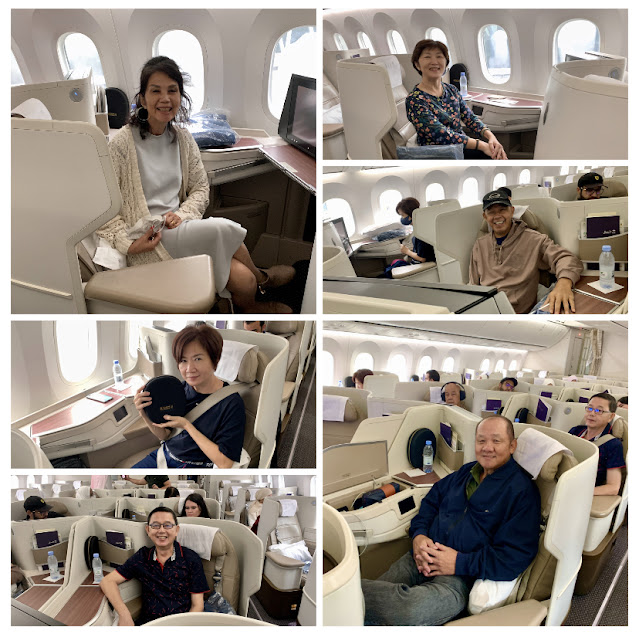



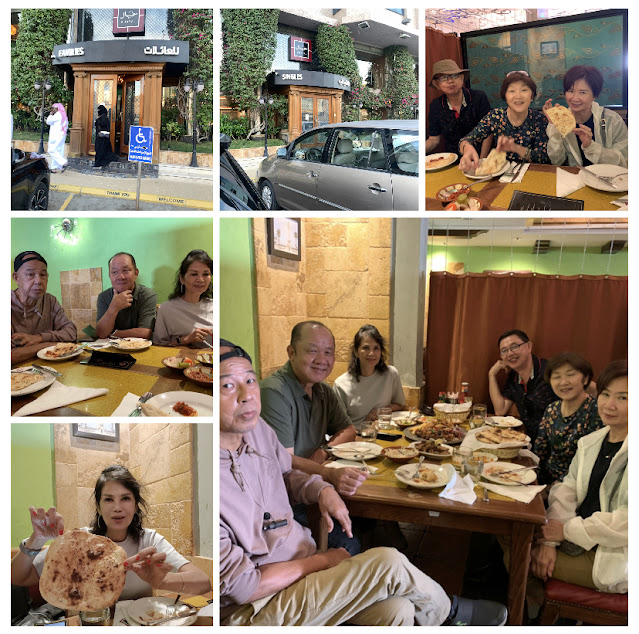


























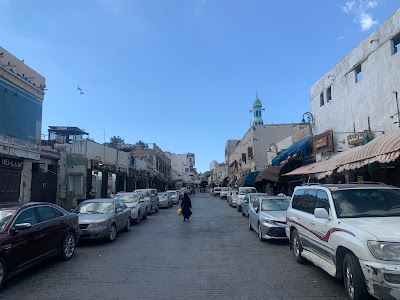




.jpg)


.jpeg)












.jpg)








.jpeg)

.jpeg)
.jpeg)





.jpeg)
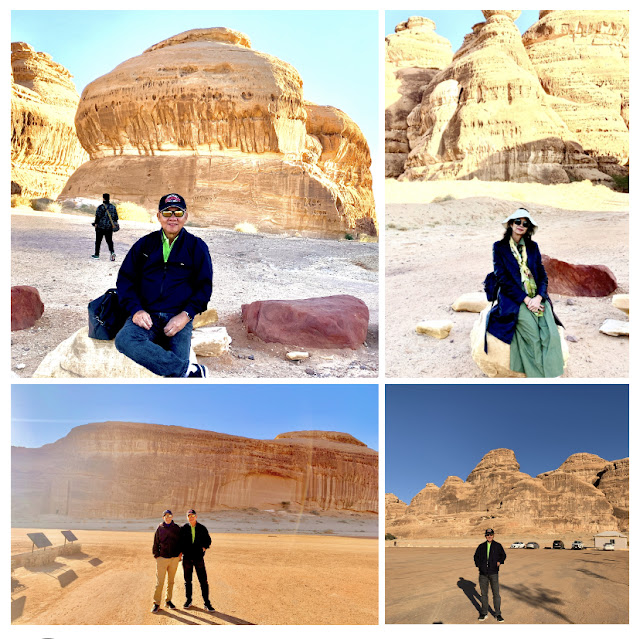
















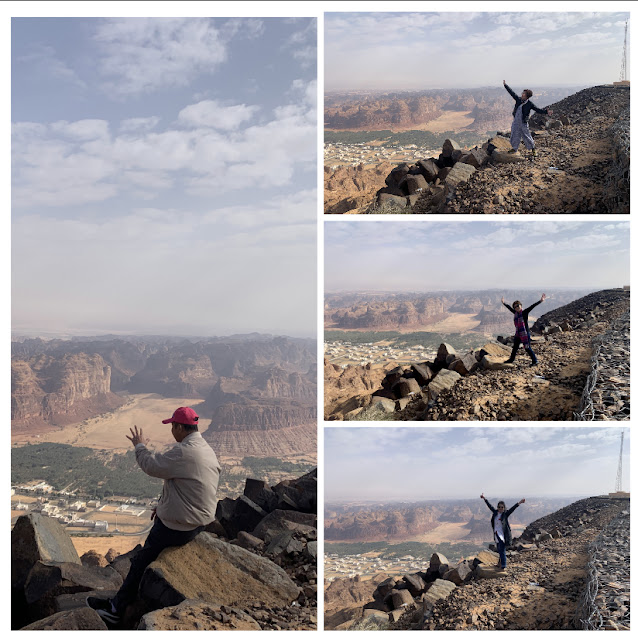



.jpeg)












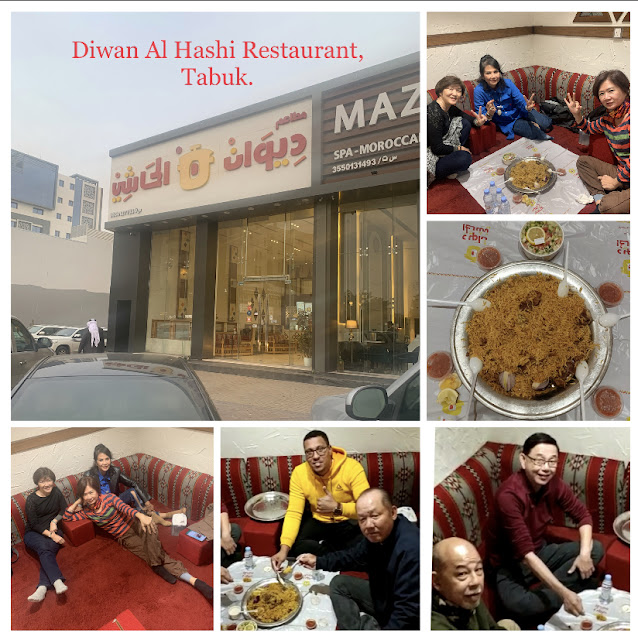
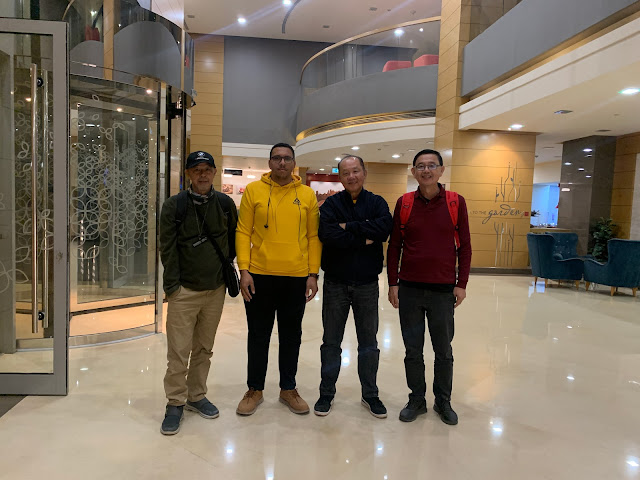




.jpeg)




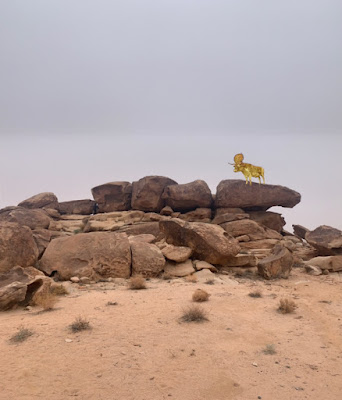


















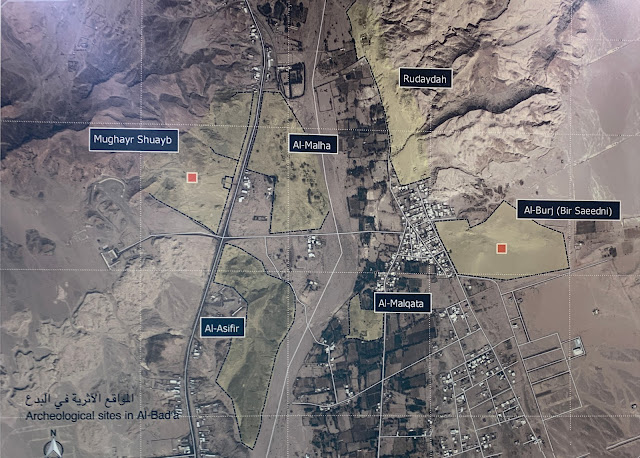












.JPG)




No comments:
Post a Comment